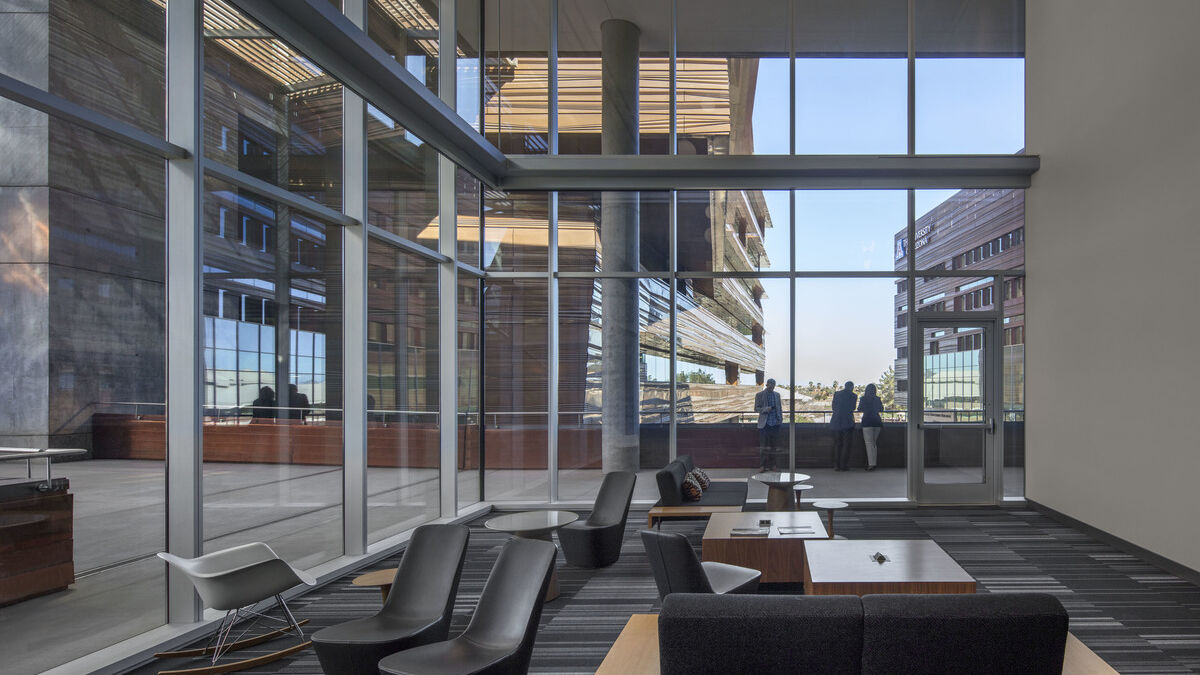
The University of Arizona
Biomedical Sciences Partnership Building (BSPB)
Active chilled beams in wet labs.
Located on the 30-acre, city-owned Phoenix Biomedical Campus, the University of Arizona’s Biomedical Sciences Partnership Building (BSPB) fosters collaboration among research scientists, healthcare providers, and private companies. The $106.8 million BSPB was programmed, designed, and constructed by the same project team as the Health Sciences Education (HSEB) Building immediately to the south, and completed in just 27 months.
AEI’s approach to optimizing building performance includes active chilled beams throughout the facility – not only in open office areas and conference rooms, but in wet labs, made possible through control strategies based on space temperature and humidity sensors. Exhaust air passes through centralized, roof-mounted energy recovery run-around loops. Primary air to the chilled beams is provided by individual DOAS air handlers located on each floor, allowing maximum flexibility for reconfiguration and preserving open space essential to interactive, interdisciplinary research. Mechanical systems are housed at the windowless east and west ends of the building, avoiding occupant exposure to desert sun.
“We knew more than a decade ago that an investment in biosciences would pay off handsomely for the citizens of Phoenix, the citizens of Maricopa County, the state of Arizona and, because of the medical advances, people all over the world.”


AEI’s prior work on the adjacent HSEB project contributed to efficiencies in the delivery of the BSPB, including shade analysis that informed the structural composition of overhangs and setbacks resembling desert rock formations. Both buildings are clad in a distinctive copper skin and the space between them is landscaped as a shaded canyon floor.
BSPB is home to: The Center for Applied NanoBioscience and Medicine; The Flow Cytometry Core Laboratory; Dr. William Cance Research Lab; The Ronald A. Matricaria Institute of Molecular Medicine; and, The Pediatric Infectious Disease Research Laboratory.
- 27 months
- programming to occupancy
“We look forward with great anticipation to the medical breakthroughs that will come from research conducted here.”
